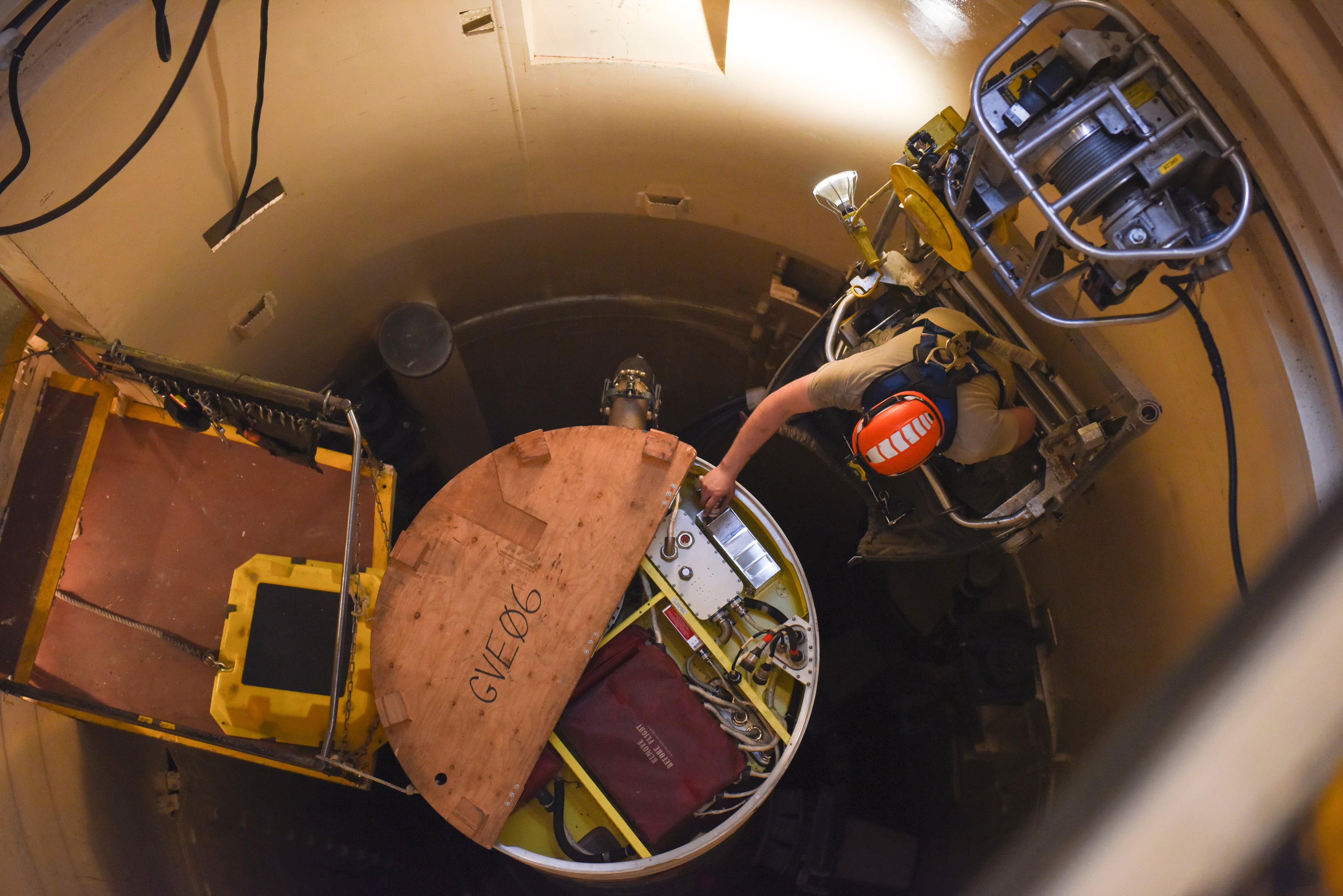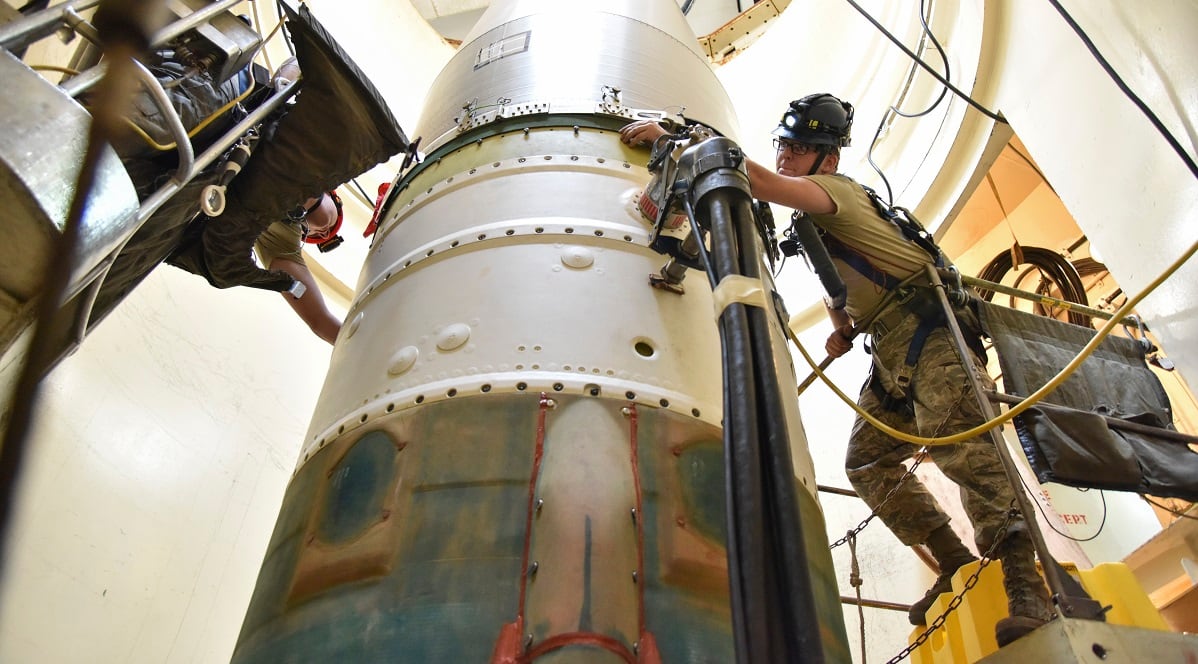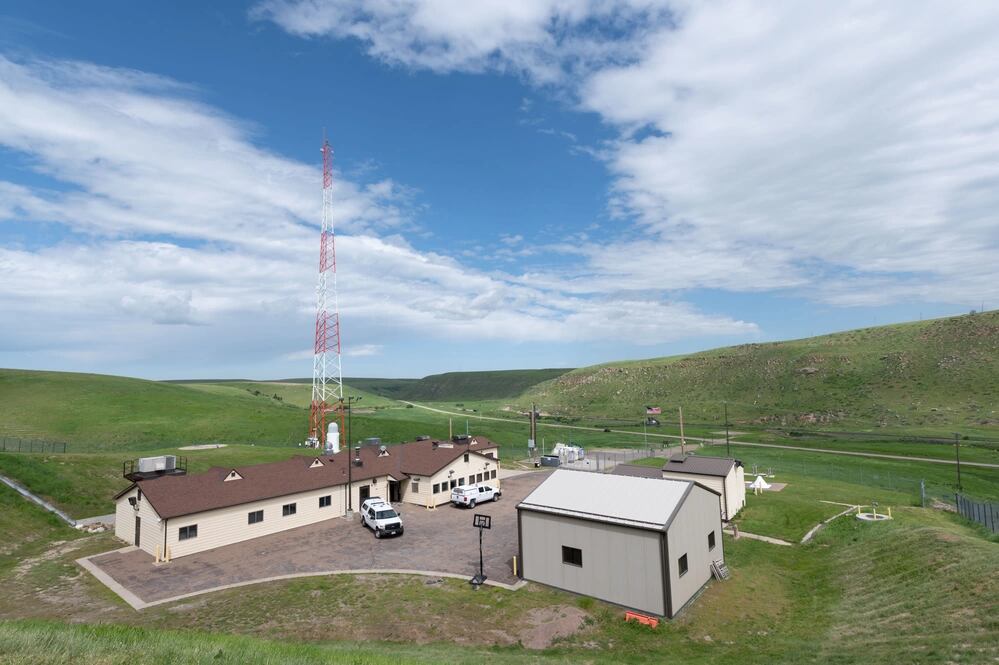Early data in a sweeping study of potential cancers in the Air Force’s nuclear missile community revealed fewer cases of most forms of the disease than expected, the service said Wednesday. But it cautioned a deeper dive is necessary before drawing any conclusions.
The first phase of the Air Force’s analysis, which analyzed the electronic medical records of more than 2.2 million airmen who were treated at military medical facilities from 2001 to 2021, revealed 198 cancer cases among the missile community and 5,063 cases across the Air Force at large, according to data provided to reporters in early March.
Officials had expected to find a total of 800 cancer cases among the missile community, according to an Air Force memo written by Col. Tory Woodard, commander of the Air Force School of Aerospace Medicine, which is running the study.
Based on National Cancer Institute data, officials expected to find 81 instances of non-Hodgkin lymphoma, but instead found 23. Their findings suggested only two cancers, breast and prostate, could be disproportionately affecting the missile community, at 13 and 24 cases, respectively. Those working on the study had expected to find 13 cases of breast cancer and 19 diagnoses of prostate cancer.
The millions of medical records reviewed in the first round include 84,000 people with ties to the missile community — like cooks, maintainers, security forces and others — as well as 8,000 missileers.
The Air Force will begin reviewing additional data sets from the Departments of Defense and Veterans Affairs, including cancer registries, this spring as the service considers whether cancers, including non-Hodgkin lymphoma, are disproportionately sickening missileers and other troops who work at the nation’s intercontinental ballistic missile bases.
RELATED

Air Force Global Strike Command boss Gen. Thomas Bussiere directed the review more than a year ago after a military brief surfaced indicating that at least nine missileers — officers who serve underground to operate the nation’s silo-based nuclear missiles — had been diagnosed with non-Hodgkin lymphoma, a blood cancer, after serving at Malmstrom Air Force Base, Montana.
The review expanded to include the entire missile community last year. The study began by testing chemical contamination levels in the air, water, surfaces and soil at Malmstrom; F.E. Warren AFB, Wyoming; and Minot AFB, North Dakota, which together operate 450 silos that launch the Minuteman III intercontinental ballistic missile. It will also include Vandenberg Space Force Base, California, where unarmed missiles are tested.
RELATED

As stories of missileers being diagnosed with cancer have emerged, the Torchlight Initiative launched to advocate for the airmen and to share their stories. The organization, which has compiled its own database of cancer cases, had found 410 self-reported cancer diagnoses among troops and family members as of Jan. 10. The numbers include 51 cases of non-Hodgkin lymphoma, 22 of which were reported from Malmstrom.
Non-Hodgkin lymphoma accounts for 4% of cancer cases in the U.S., according to the American Cancer Society, which estimates more than 80,000 people will be diagnosed with the illness in 2024. Of those, more than 20,000 will die.
The Air Force cautioned that its initial data set may only capture 25% of total cancer cases, and the service said it did not know if the breast and prostate figures could be the result of exposure to carcinogens or of better access to medical care and screenings.
The Air Force said it is still trying to determine the size of the missileer community over time, and wants to include that data, if it’s available. Jim Warner, a retired colonel who now leads the Association of Air Force Missileers, estimated that around 22,000 people have directly operated the Minuteman program, which dates back to the early 1960s.
Warner said his organization has spread the word about the Air Force’s study through its newsletters and social media, adding the study may overlook many former airmen who haven’t received care through the military medical system or VA facilities since they left the service. He also wants the Air Force to expand its study to include deactivated Minuteman wings at Ellsworth AFB, South Dakota; Grand Forks AFB, North Dakota; and Whiteman AFB, Montana.
While the data may never offer a clear view of cancer rates, Warner argued that including the entire missile community may dilute the overall picture, and could make it more difficult for missileers seeking treatment to prove a service connection to the VA.
“My gut is telling me that if you really limited this study to Malmstrom Air Force Base, I think your numbers would be alarmingly high,” Warner said. “If you add in the entire missile community, I think you’re diluting the results, and you’re going to find that it’s not that significant.”
The study’s next phase will include VA medical records dating from 1991 to 2021, as well as an analysis of DOD and VA cancer registries dating back to 1976, which the Air Force says may help form a more complete picture.
Additional reviews of death indexes, and a registry including cancer data from 45 states and U.S. territories, are expected to follow.
Environmental sampling
As the Air Force releases its first round of cancer analysis, it has also completed a second round of seasonal environmental sampling that included more than 70,000 data points as it searched for carcinogens at missile sites. That includes looking for polychlorinated biphenyls, or PCBs, a chemical class that was used in oils, electrical components, and more until it was banned more than four decades ago.
RELATED

The second round revealed no major findings, and all results were either below laboratory limits of detection or within acceptable limits set by the federal government.
That included 108 surface swipe and six air samples taken from missile procedure trainers, or consoles modeled after launch control centers, the Air Force said. The service did not repeat its PCB swipe samples within launch control centers because levels aren’t expected to fluctuate seasonally, and some are already undergoing remediation after tests last year showed two missile alert facilities at Malmstrom and one at Minot were contaminated above thresholds set by the U.S. Environmental Protection Agency.
Two of those facilities have been cleaned below EPA limits and reopened, the Air Force said, while mitigation efforts at a third are still underway. The Air Force declined to say which of those three is still being cleaned.
The second round of tests included more than 2,400 samples taken at Minot, Malmstrom and F.E. Warren in November. Results from tests at Vandenberg, which included PCB sampling in launch facilities, were taken in mid-February. Any results that raise concern will be expedited, the Air Force said. A third round of testing is planned for the April-May time frame.
As a result of the elevated PCB levels, the Air Force said it has established a recurring PCB-cleaning contract of its launch control centers and next steps include creating response procedures for contaminated areas identified in the future. Other next steps include establishing or updating maintenance technical orders, bioenvironmental response checklists and civil engineering manuals, and refining sampling plans for launch facilities. Additional deep cleaning, separate from PCB cleaning, will be done to improve conditions for the airmen who live and work around the clock at missile sites.
“Your safety and health are still my priority,” Bussiere said during a virtual town hall with current and former missile community members Feb. 23. “My leadership team, our Air Force leaders and I take the responsibility to protect airmen and guardians extremely seriously. I vow to maintain an open dialogue with you, your families, and the missile community past and present throughout this process.”
Courtney Mabeus-Brown is the senior reporter at Air Force Times. She is an award-winning journalist who previously covered the military for Navy Times and The Virginian-Pilot in Norfolk, Va., where she first set foot on an aircraft carrier. Her work has also appeared in The New York Times, The Washington Post, Foreign Policy and more.




